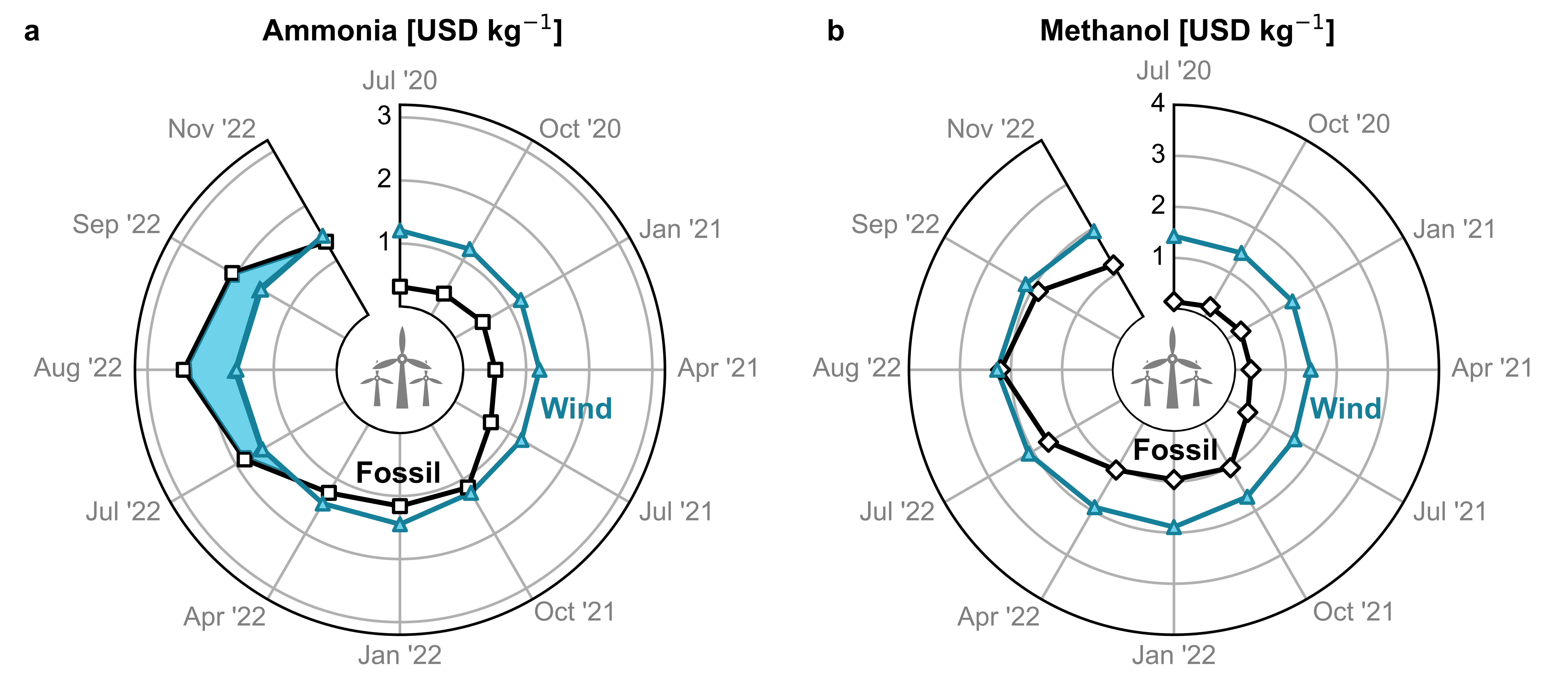Green Chemicals: The Ultimate Win-Win Solution Amidst Europe's Energy Crisis
The chemical industry strongly depends on fossil fuels, responsible for approximately 10% of global greenhouse gas emissions.[1] Ammonia and methanol are essential platform chemicals that serve as primary building blocks for producing a myriad of products with diverse applications in various industrial sectors. Currently, 60–70% of global ammonia and methanol are produced from syngas, primarily obtained through steam reforming of natural gas, contributing to GHG emissions of 0.8 Gt CO2‑eq yr–1.[1] Previous studies have demonstrated the technical feasibility and potential climate benefits of using green hydrogen in ammonia and methanol production.[2] However, the fundamental barrier towards implementation has always been the higher production costs than their fossil-based counterparts. The current geopolitical scenario has dramatically altered this situation, leading to a surge in natural gas and electricity prices, resulting in higher production costs for fossil-based ammonia and methanol in Europe. Consequently, under this scenario, low-carbon ammonia and methanol production could potentially become economically (in addition to environmentally) appealing. In this study, we employ process simulation and techno-economic assessment tools to examine the extent to which the ongoing energy crisis in Europe has affected the economic competitiveness of green ammonia and methanol. According to our study, fossil ammonia and methanol reached production costs of 2.4 and 2.2 USD kg–1, respectively, during the peak of natural gas spot prices in August 2022 (Fig. 1). These high prices, i.e., 3–4 times higher than in the same period in 2021, made green ammonia and methanol from on‑shore wind electricity economically competitive during the same period (Fig. 1). Wind‑based ammonia, in particular, exhibited a significant advantage, with costs ranging from 1.3 to 1.6 USD kg–1, clearly outperforming its fossil counterpart (blue shaded area in Fig. 1a). Our study highlights the tremendous potential for Europe to lead the grand transition towards a sustainable chemical industry, given the evident uncertainty in natural gas supply and the price fluctuations.

Fig. 1 Temporal evolution of estimated production cost for wind‑based (a) ammonia and (b) methanol in Europe compared with their fossil counterpart in USD kg–1. The blue shaded area in (a) demonstrates the economic viability of wind-based ammonia.
[2] Á. Galán-Martín, V. Tulus, I. Díaz, C. Pozo, J. Pérez-Ramírez, G. Guillén-Gosálbez, One Earth 2021, 4, 565.